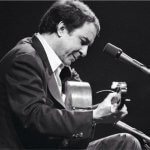Although online performances are the order of the day in the wake of Covid-19, the world of performing artists is patiently waiting for some sense of normalcy to return and allow for live acts to resume.
So, we decided to celebrate some of the true icons of Bossa Nova, the influential musical movement that even inspired the name of this magazine. The term Bossa Nova was first used in the 1930s, in a song by Noel Rosa (Sambista): “O samba, a prontidão e outras bossas, são coisas nossas”. January 25 is National Bossa Nova Day, on account of it also being Tom Jobim’s birthday, one of the godfathers of the genre and composer of the timeless classic, Girl from Ipanema, which was inducted, in 2005, into North America’s top 50 musical works of all time. Jobim is a legend; Rolling Stone Magazine considers him the greatest Brazilian musician of all time. That’s quite the accolade. Two songs triggered the birth of Bossa Nova: Canção do Amor Demais (1958), Elizeth Cardoso’s interpretation of music composed by Tom Jobim and Vinicius de Moraes (with João Gilberto on guitar); and Chega de Saudade (1959) by João Gilberto (written by Tom Jobim and Vinicius de Moraes).
But let’s cut to the chase—let’s take a look at the leading men and women of Bossa Nova and their music! Of course, we can’t pay tribute to every artist that has helped elevate this genre to the world stage, but here we list some of the more prominent names and influencers.
ARTISTS
 |
Tom Jobim (1927-1994) |
 |
Vinicius de Moraes (1913-1980) |
 |
João Gilberto (1931-2019) |
 |
Carlos Lyra (1933) |
 |
Roberto Menescal (1937) |
 |
Nara Leão (1942-1989) |
 |
Ronaldo Bôscoli (1928-1994) |
 |
Baden Powell (1937-2000) |
 |
Edu Lobo (1943) |
 |
Francis Hime (1939) |
 |
Marcos Valle (1943) |
 |
Bebel Gilberto (1956) |
SONGS
– Girl from Ipanema: composed by Vinicius de Moraes and Tom Jobim, and penned in homage to Helô Pinheiro (the actual girl who used to pass by on her way to the beach), it is considered the definitive anthem of Bossa Nova. It gained notoriety when translated into English and performed by Astrud Gilberto.
– Samba do Avião: composed by Tom Jobim, the song tells of a flight arriving in the city of Rio de Janeiro.
– Desafinado: music by Tom Jobim and Newton Mendonça and immortalised in the voice of João Gilberto.
– Insensatez: also composed by Vinicius de Moraes and Tom Jobim, in 1961. It was recorded in English (How Insensitive) by legends like Ella Fitzgerald, Frank Sinatra and Iggy Pop.
– Ela é Carioca: a compliment to the women of Rio! From who? You guessed it, Tom Jobim and Vinicius de Moraes.
– Chega de Saudade: Written in 1956 by you know who, Vinicius de Moraes and Tom Jobim (they really were geniuses). João Gilberto also recorded it on his first solo album and the song became one of the greatest hits of Bossa Nova.
– Águas de Março: composed by Tom Jobim in 1972 and performed in a duet with Elis Regina on the LP Elis & Tom (1974).
– Samba de Uma Nota Só: this collaboration between Tom Jobim (music) and Newton Mendonça (lyrics) also gave way to an English version: One Note Samba.
The Bossa Nova movement lasted for just over a decade, coming to an end in 1966 and giving rise to another Brazilian musical style, MPB (Brazilian Popular Music). While its time in the spotlight was fleeting, Bossa Nova remains a huge influence on other genres today and an audio staple among admirers of quality music.

















